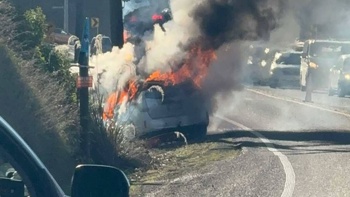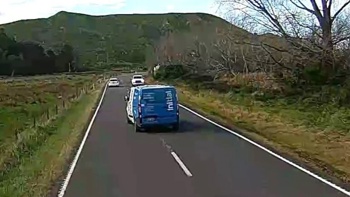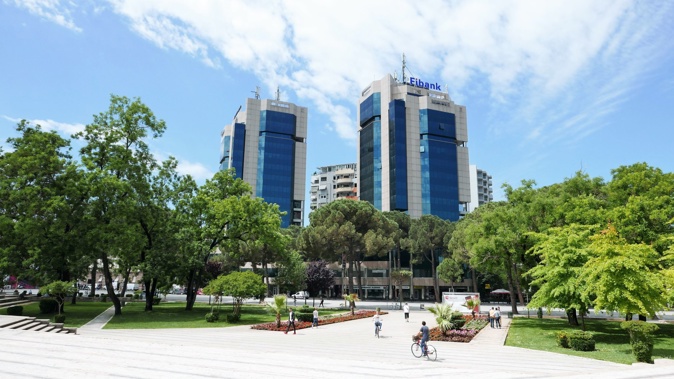
Fringing the Adriatic coastline, a foray to Albania was a runaway highlight of my two-week long Balkan Adventure Trafalgar Tour. The country’s seriously weird past and oh-so bright future dramatically collide in the colourful capital of Tirana. As we approached the outskirts of the capital, my effervescent Trafalgar travel director, Tammy, implored us to keep an eagle-eye out for two quirky sights.
First, Tirana’s bizarre version of the evil eye to ward off evil spirits comes in the form of teddy bears dangling from a rope off the side of a balcony, or hanging from a roof. Sure enough, we spotted hundreds of these manky soft toys dangling from houses. The other quirky signature are the thousands of bunkers that speckle the landscape, like concrete hobbit houses. The former Communist dictator, Enver Hoxha, who ruled Albania for 41 years, commissioned 173,000 of these military bunkers to be built, to defend the nation from invaders.
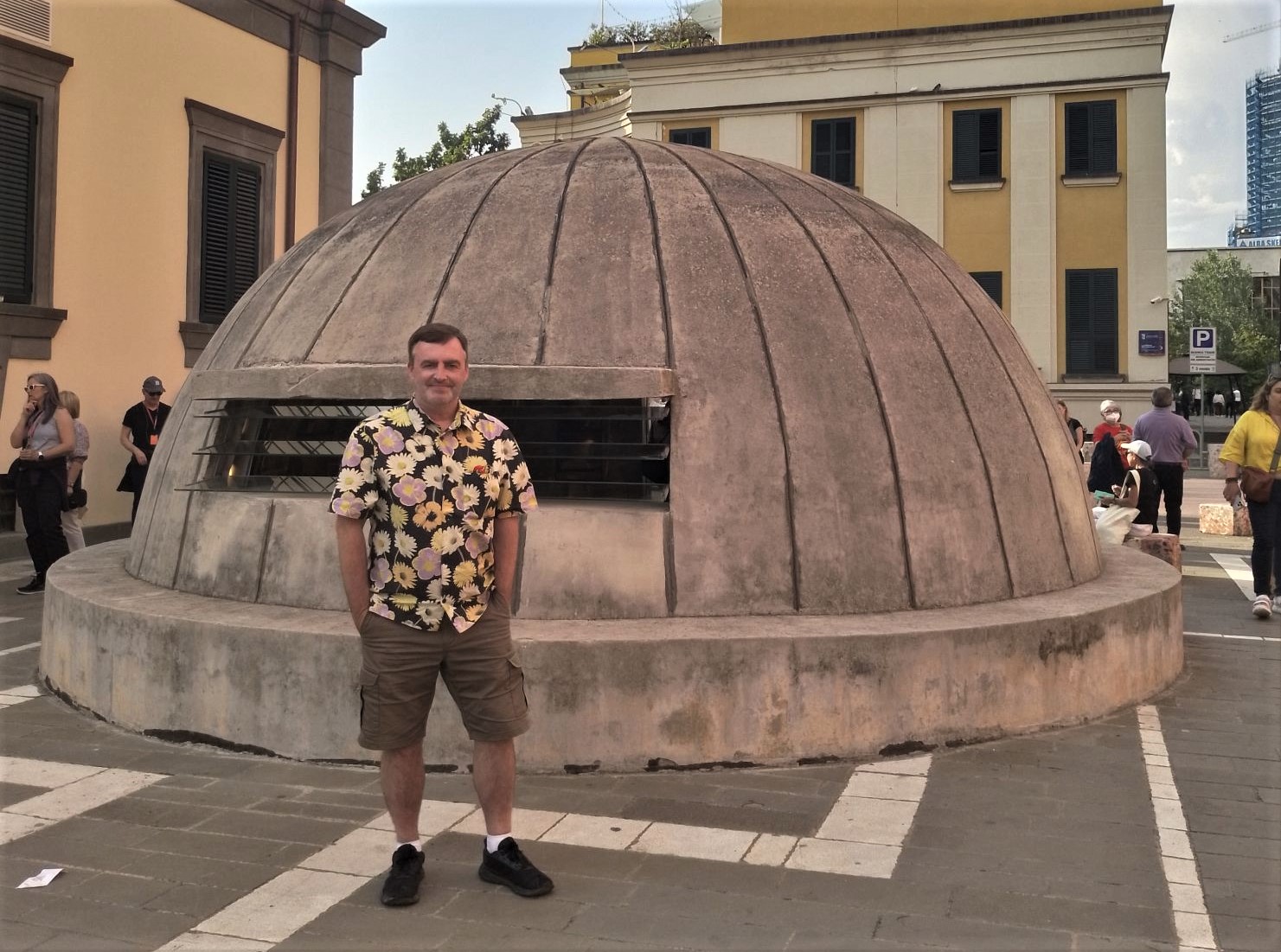 Mike outside a Tirana bunker. Photo / Mike Yardley
Mike outside a Tirana bunker. Photo / Mike Yardley
Most of these bunkers are now derelict, although some have been repurposed as Air B’nBs. His bunkerisation programme was a colossal drain on his already stagnant economy, but serve as testament to his extreme paranoia about the outside world. From the age of three, young Albanians were taught to be constantly on the lookout for enemies launching an attack! The other extraordinary sight on the streets is the astonishing number of Mercedes Benz. When Communism finally fell, driving a Mercedes Benz was viewed by many Albanians as the ultimate status symbol, so thousands of them were stolen to order in Europe and brought to the country.
Fast forward to today’s free Albania, and Tirana is billed as one of Europe’s most affordable capital cities. You can virtually smell the buzzy ambition in the air, as downtown Tirana continues to transform with chic bars and restaurants, glossy shopping malls and edgy skyscrapers joining the almost surrealist pastiche of totems to the past.
Skanderbeg Square is a case in point, proudly refreshed with 100 frothy new fountains and rosy granite paving. It’s home to an 18th-century mosque and minaret, a domed Albanian Orthodox church reopened a decade ago, and a heavy set of fascist and brutalist government buildings. Skanderbeg takes pride of place, mounted on his horse. He was Albania’s William Tell, a 15th century military commander, who became a national hero for repelling the advance of the Ottoman Empire – for a while anyway. Although the Ottomans eventually took control of Albania, after his death, his regional leadership and military victories arguably prevented Western Europe from falling to the Ottomans. A 10 metre-high bronze statue of Enver Hoxha stood in this square too, until an angry mob pulled it down in 1991.
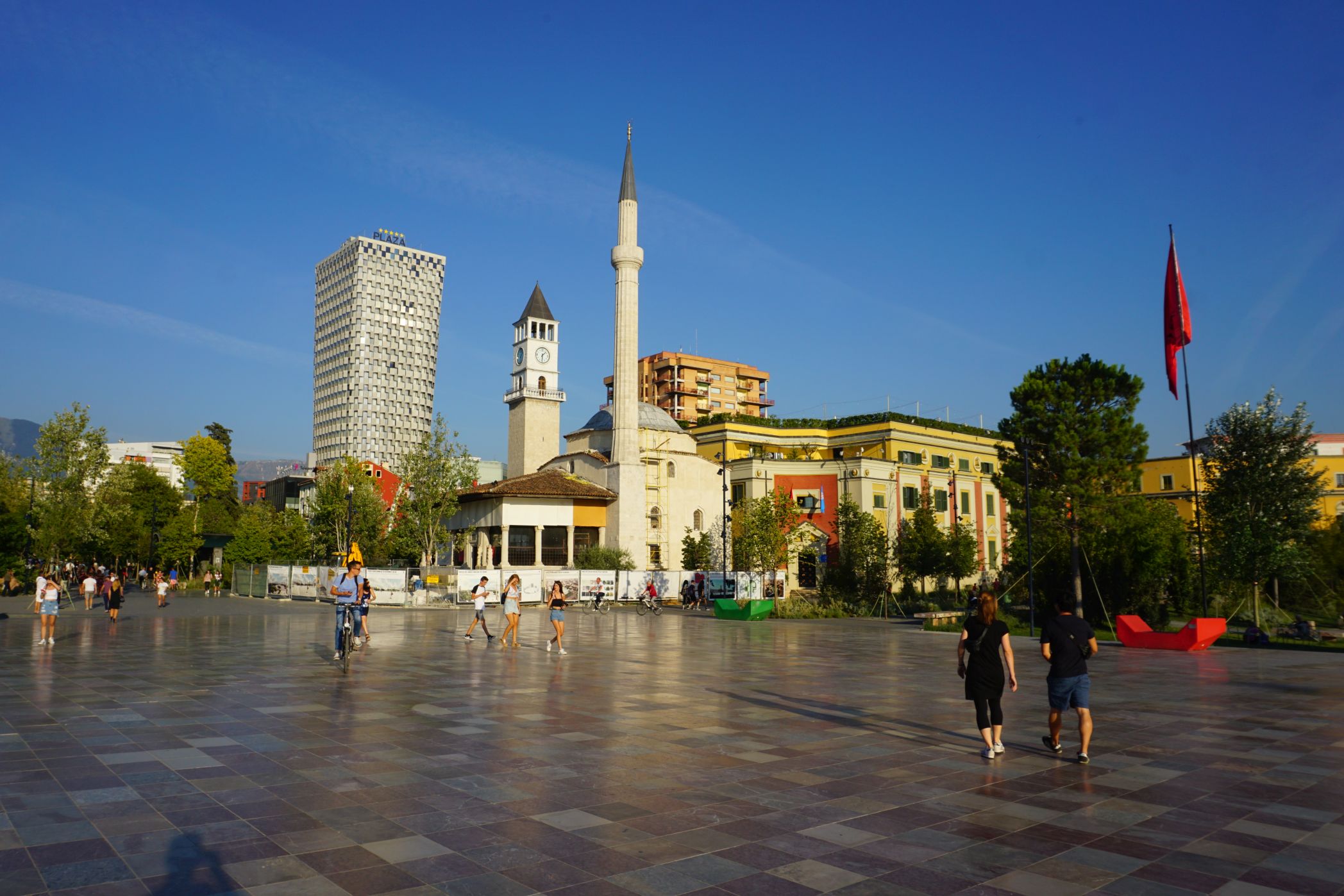 Photo / Supplied
Photo / Supplied
Check out the ginormous mural festooning the frontage of the National Historic Museum, a huge socialist mural of victorious partisans and now a relic from a bygone age. Aside from the lofty landmarks, this enormous square is the biggest in the Balkans. It throbs with street theatre and buskers, while vendors sell popcorn and balloons. It’s a window on Tirana’s soul and the city’s new-found verve.
The city seems obsessed with bright colours. Old grey apartment blocks and crusty remnants of the old regime have been given a radiantly colourful facelift. The carnival of colours emblazoned on the building facades makes a striking impression, a metaphor for the city’s new-found vitality. Tirana is anything but monochrome.
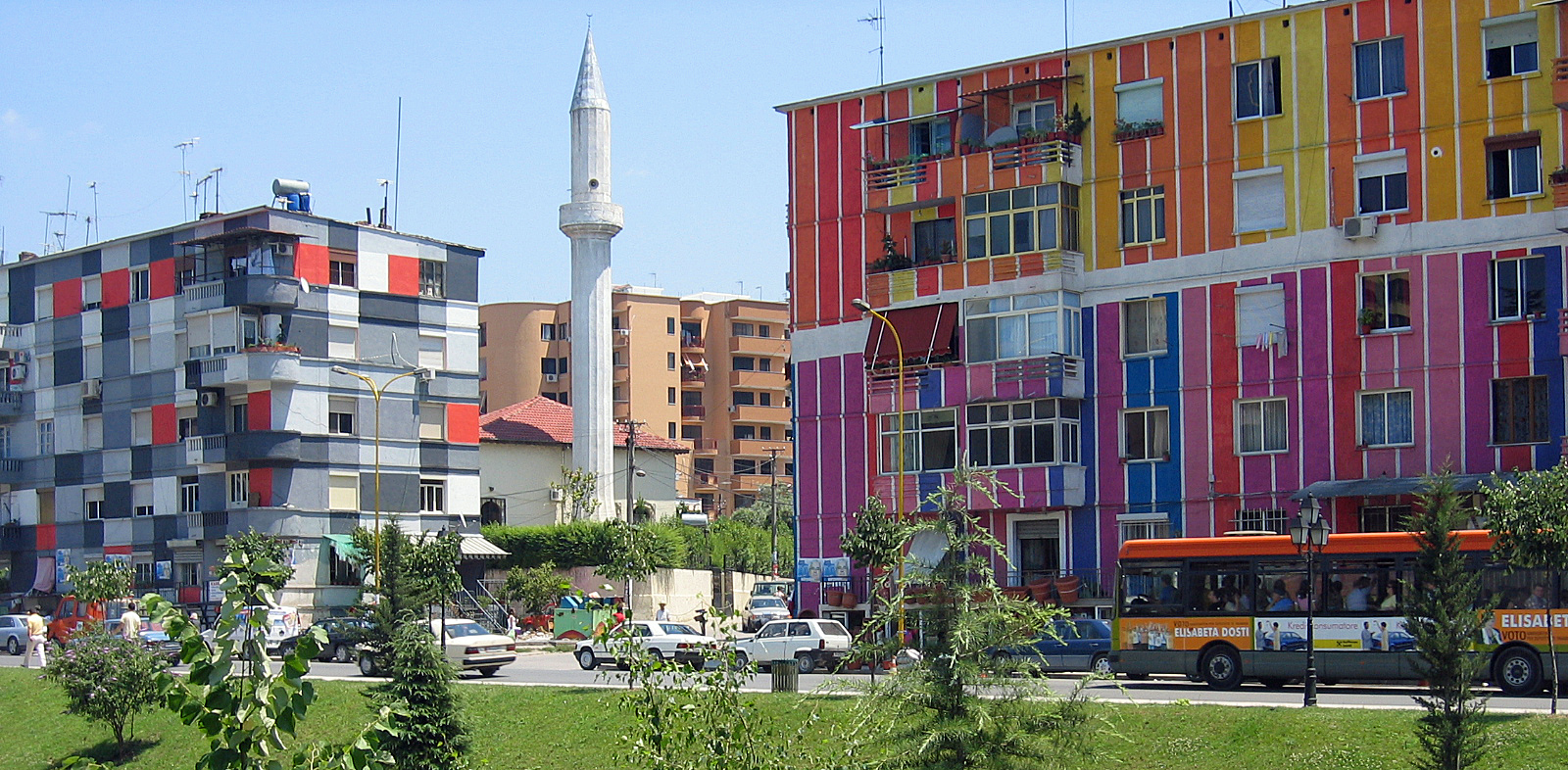 Photo / Supplied
Photo / Supplied
We strolled through the Fortress of Justinian, with its old bazaar, resplendently restored in recent years. Dating back to the 14th century, the six metre high walls originate from the Byzantine era. There’s a spoil of temptations, whether you’re shopping for local art or sinking your teeth into some signature tastes of Tirana. I munched on various dishes including jufka (an Albanian pasta) with porcini mushrooms; quail roasted inside of clay ; a zesty salad of Jerusalem artichokes, pickled apple and cured goat tongue. They also do a very nice vegetarian stew, fegese. This slow-cooked stew consists of peppers, onions, spices, tomatoes and cottage cheese. If you’ve ever wanted to feast on kukurrec (grilled lamb’s intestines), you’ve come to the right place. Wash it down with some fiery shots of mulberry rakija. The old bazaar is close to BunkArt Museum, housed inside one of Hoxha’s biggest city bunkers. It provides a great journey through the strange and obsessive mind of their old dictator.
You can also see his old three-storey villa, housed in a neighbourhood called “The Block”, which was a highly protected downtown enclave for all of his government flunkies. The leafy city centre and its wide boulevards is agreeably walkable, when taking in the sights. Be sure to add to the check-list one of the ugliest Communist-era constructions of all: The Pyramid. This triangular white-marble and concrete behemoth was designed by a group of architects led by Hoxha’s daughter, as the shrine of the dictator. It briefly served that purpose until 1991, when it was turned into conference centre. Stripped of the marble tiles that once covered it and splattered with graffiti, you can now climb and slide all over it. It also doubles as a favourite haunt of local skateboarders who tear along its sloping surfaces. The interior of the building is now being fully refurbished as a cultural hub of studios, galleries and cafes.
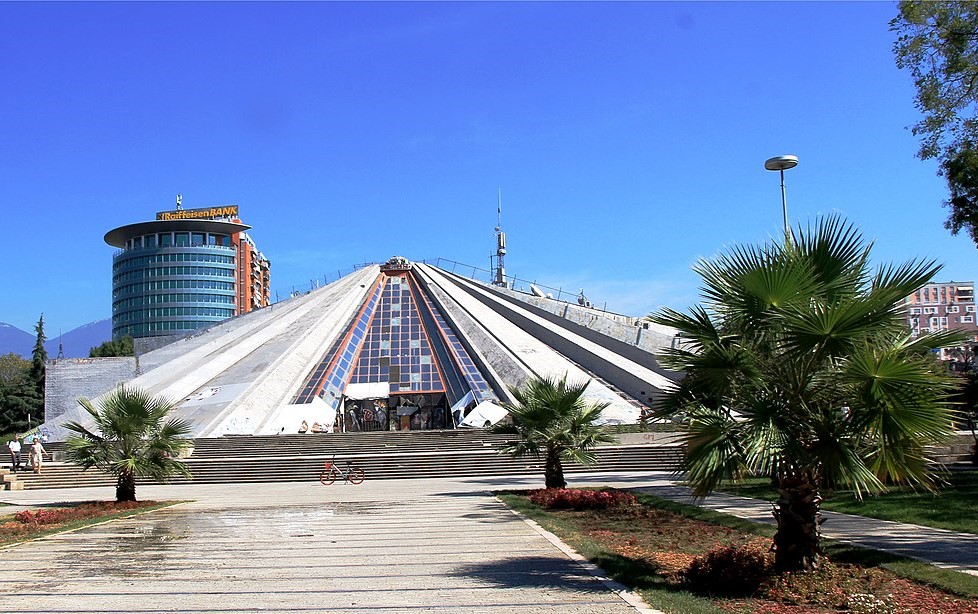 Photo / Supplied
Photo / Supplied
Since emerging from the vice-like grip of the Communist age, Albania has proven to be one of the West’s most trusted partners in Southeastern Europe, joining NATO in 2009. As we were wandered around the city centre our local guide pointed out a vivid illustration of Albania’s assertive moral compass. The government was so appalled by the Russian invasion of Ukraine, that they have officially renamed the street that the Russian Embassy is located on as “Free Ukraine St.” The embassy was incensed at the name change and the fact that the street sign lords over the embassy’s entrance. They lodged a complaint, but Albania did not budge. It’s a requisite photo-stop, in this eye-opening city of distinctive intrigue.
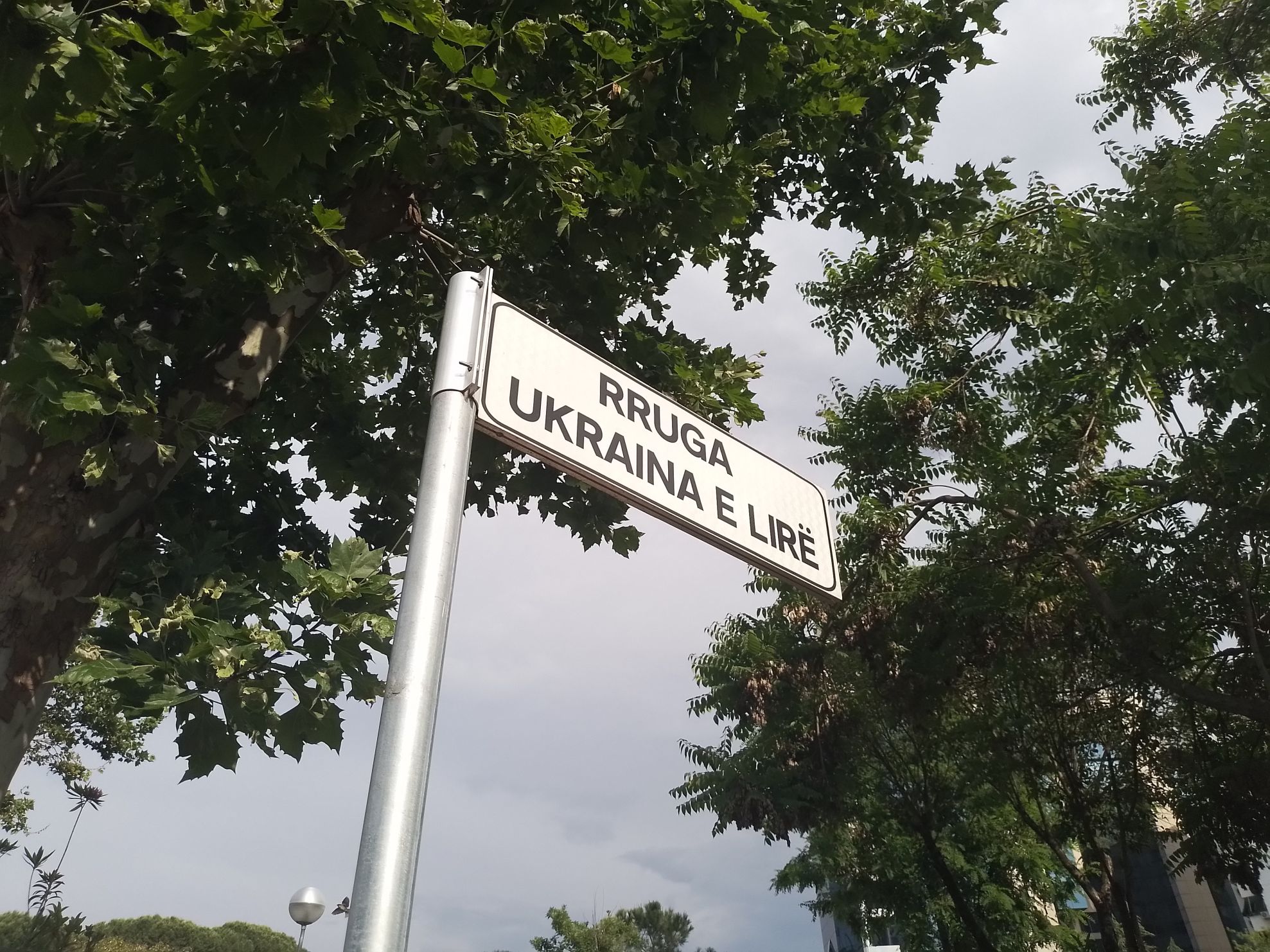 Photo / Mike Yardley
Photo / Mike Yardley
Trafalgar’s amazing Balkan Adventure is a 14 day tour, spanning seven countries and 13 cities. For upcoming tours in September, lock in a booking from $4,675 per person, twin share. For 2024 tour dates, prices start from $5,895 per person, twin share. www.trafalgar.com/en-nz/tours/balkan-adventure
Mike Yardley is our resident traveller on Jack Tame Saturday Mornings.
Take your Radio, Podcasts and Music with you






